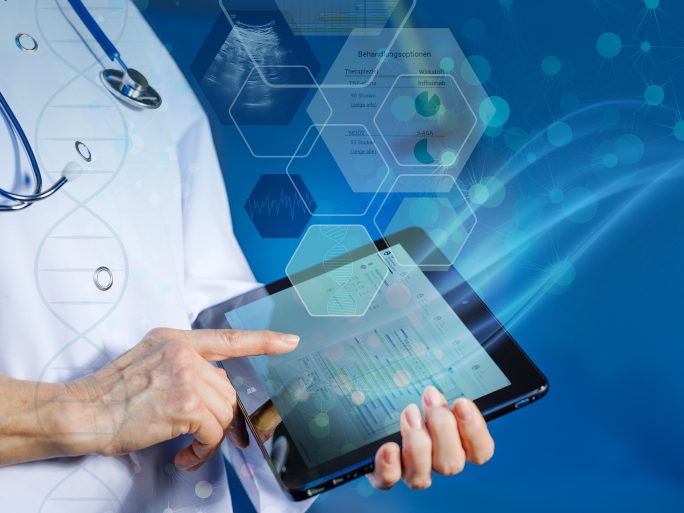Using Patient Data Securely

Electronic patient record (ePA) to be mandatory from the end of 2024 / Discussion about the security of sensitive health data gains new momentum
As a participant in the National Research Center for Applied Cybersecurity ATHENE, Fraunhofer IGD is pursuing the goal of advancing digitization in healthcare by improving the security of data use. Currently, patient data such as MRI scans, lab results or therapy courses are distributed among various doctors and clinics.
This is set to change fundamentally in the coming years. “If data sources are increasingly connected, this offers enormous potential for improving the quality of patient care and avoiding unnecessary duplicate examinations,” says Professor Jörn Kohlhammer, ATHENE scientist at the Fraunhofer Institute for Computer Graphics Research IGD. However, at the same time, more attention is being given to securing this data and to the issue of data protection.
Data security during transmission, storage and long-term use
A team from Fraunhofer IGD and SIT is therefore addressing three key challenges: In addition to their secure transmission, the collected data must be protected from access by unauthorized persons when stored in a cloud solution, for example. The researchers are also looking into the question of how data can be secured in the long term when it is only available digitally and no longer on paper.
“Patients have the feeling that they are losing sovereignty over their data in the course of digitalization,” says Kohlhammer. It is therefore not surprising that less than one percent of those with statutory health insurance are currently using the possibilities offered by the ePA. On the other hand, doctors are also concerned that they will not be able to meet their complex legal obligations regarding data protection.
In Fraunhofer IGD’s view, the solution is a targeted visualization of data protection information, consent forms, and information about what data is available to whom and how it may be used. “The simpler and more comprehensible these are, the higher the acceptance of digitization in the healthcare sector will be overall,” Kohlhammer is certain. The ePA is just the first step toward individualized medicine, which could bring about lasting changes in the healthcare system through artificial intelligence.
Digital twin connects health information
A current Fraunhofer project in this context is MeDiTwin, the digital twin in healthcare. This connects all of a patient’s health information with each other and enables the comparison of parameters from population studies and data on specific clinical pictures such as diagnostics, course of disease, medication or therapies of other affected persons. The result is a holistic, digital patient model that not only makes all important data available to healthcare professionals at a glance, but also provides comprehensive, data-driven decision support at the same time.
“Strict attention to security aspects is essential in projects like MeDiTwin,” says Kohlhammer. With this project, ATHENE is complying with this in the area of health data. This is also important when considering the further development of data infrastructures. In addition, the protection of data must also be a top priority in exchanges between institutions.